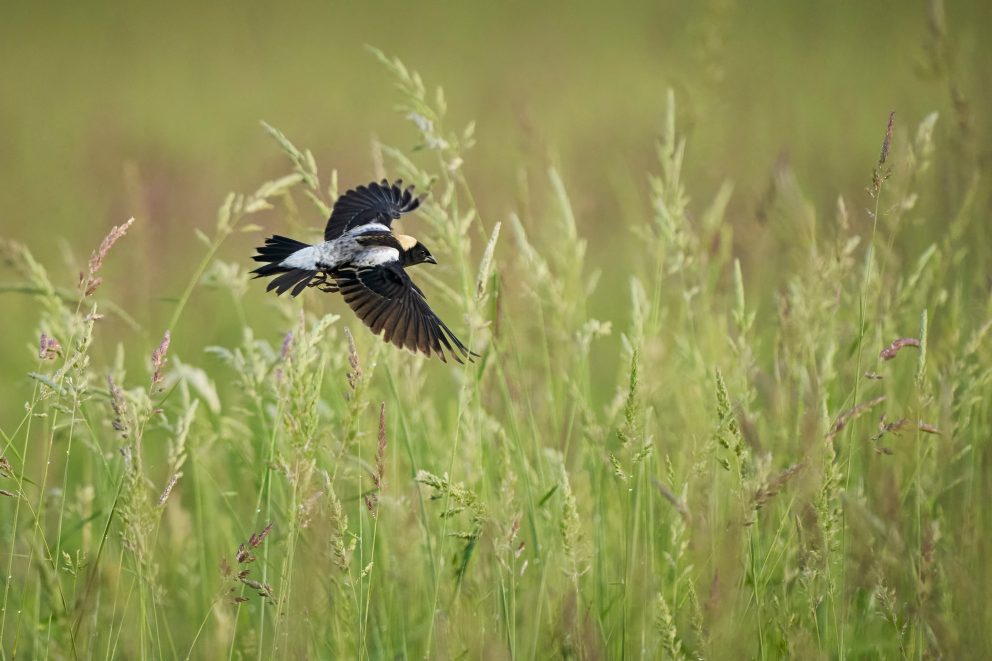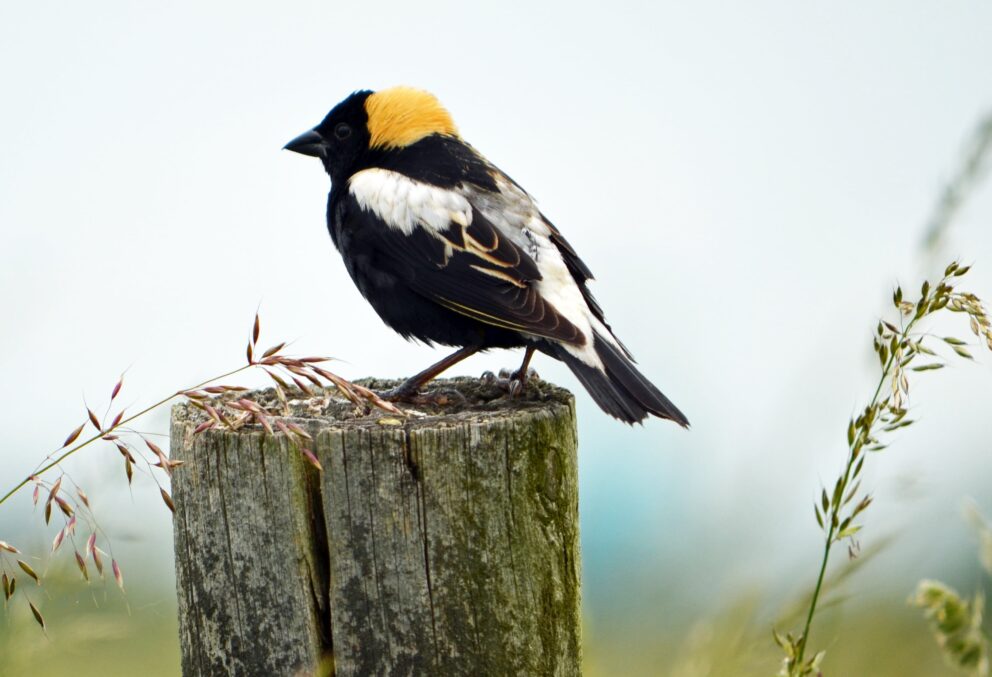- SCIENTIFIC NAME
- Dolichonyx oryzivorus
- CLASSIFICATION
- Bird
- LIFE SPAN
- 1-8 Years
- SIZE
- 6-7” | 0.0625-0.125lbs
- STATE CONSERVATION STATUS
-
- Priority Species
- FEDERAL CONSERVATION STATUS
- Least Concern
- GAME STATUS
- Non-Game
- GAME TYPE
- None
- Washoe
- Humboldt
- Pershing
- Churchill
- Mineral
- Lyon
- Douglas
- Carson City
- Storey
- Elko
- Lander
- Eureka
- White Pine
- Esmeralda
- Nye
- Lincoln
- Clark
Habitat & Range
The Bobolink is found in the northeastern portion of the state, and is uncommon across the rest of Nevada. They breed in native grasslands and agraicultural fields.
- Agricultural Lands
- Grasslands
- Marsh
Threats
- Habitat Loss
Natural History
Bobolinks are ground foragers, feeding on insects in the spring months and providing protein through the form of invertebrates to their young. During the fall and winter, they forage for weed seeds, grains, and oats. These birds are polygamous nesters. One female may raise chicks belonging to several different fathers. Nests are made on the ground at the base of woody vegetation, usually consisting of mud, weeds, and sedges about two inches wide and deep. Raising young is a family effort, with young being fed by the mother, multiple fathers, and older siblings. Bobolinks will migrate long distances to South America, settling in marshes and agricultural lands.
Fun Facts














